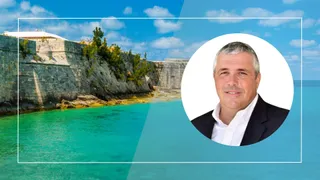
Rethinking ILS collateral
Insurance-linked securities (ILS) are attracting a significant amount of new demand from environmental, social and corporate governance (ESG) investors, according to Peter Dunlop, partner at Walkers in Bermuda, leading to increasingly creative deal structures that maximise the social benefits of the structures.
“Many existing ILS investors already think of it as an ESG product and demand great things from ILS capital managers to meet ESG-motivated goals,” Dunlop notes. One result of this is a number of structurers looking to maximise the appeal of ILS by getting creative around the use of collateral.
“We don’t want to see a collateral quality creep as we saw in the US mortgage securities market in 2008.” Peter Dunlop, Walkers
Rethinking what investments to hold as collateral comes with a number of benefits. If ESG-friendly securities are held as collateral it can make a structure more appealing to ESG investors. Meanwhile, stubbornly low interest rates mean the US Treasuries typically held as collateral offer little in terms of increasing the returns an ILS will generate.
“Ultimately ESG is not only about philanthropy,” says Dunlop. “There is a growing interest in ESG among investors, but ESG goals must still marry the primary investment goal of making a return.”
With ILS, there is an opportunity to kill both of those birds with a single stone by looking at the collateral tied up in a trust, and how that is used, says Dunlop.
“Capital set aside to facilitate the reinsurance trade must also generate better returns, which has led to investors including issuances such World Bank bonds, which will offer more favourable returns compared to US Treasuries, being included in the collateral stack,” he says.
The Bermuda Monetary Authority’s (BMA) Special Purpose Insurer (SPI) Guidelines require that SPIs must be fully collateralised and carry minimal investment risk, notes Dunlop, but the regulator has left room for how exactly the collateral package is constituted.
“Collateral must be liquid and of high quality, but it does not have to be only US Treasuries,” he explains. “We have seen an increasing number of ILS deals that have used alternative, ESG-related collateral.”
Dunlop adds: “As long as those collateral sources are considered high quality and the top-up provisions are sufficient to meet any impairment issues, the BMA has been open to allowing them.”
ILS that use World Bank bonds or other ESG-type investments as collateral are “effectively ‘ESG squared’”, argues Dunlop. “ILS can already be used as an ESG product on the risk side, in that it helps people affected by natural disasters to manage risk—that is a social good in itself.
“Deploying ESG-related collateral to back those obligations is a neat and intelligent way to compound that ESG component.”
Beware of lower quality assets
Dunlop admits one concern is the possibility the pursuit of ESG goals—or higher returns—could go too far.
“Using World Bank bonds gives little cause for concern but regulators and ILS participants must remain guarded against the use of lower quality assets in spite of their higher yield,” he warns.
“The utmost priority for ILS is the protection of the ILS buyer. Collateral must remain liquid and readily available to ensure there is no slipping of standards. We don’t want to see a collateral quality creep as we saw in the US mortgage securities market in 2008.”
There is, however, little danger of that happening in Bermuda, Dunlop argues.
“I have confidence in the BMA to find the right balance and ensure there is never any compromise on the quality of collateral in Bermuda-based ILS,” he says.
The possible evolution of the ILS market along these ESG lines notwithstanding, Dunlop stresses the most significant contribution the re/insurance industry can make to furthering the global ESG agenda is to work to close the protection gap.
“The protection gap remains the biggest challenge the industry faces,” he says. “The best thing we can do for the good of humanitarian goals is to figure out a way to offer protection to the most vulnerable people in parts of the world that suffer a lot of natural disasters but cannot afford to buy insurance.”
He admits that neither the industry, nor global policymakers, have devised the best way to make that happen yet.
“It may require some sort of public-private partnership mandate, but it isn’t clear yet how best to create the right incentives to make that happen,” Dunlop concludes.

